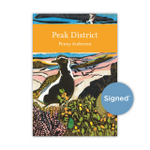![The North Norfolk Coast The North Norfolk Coast]()
Click to have a closer look
About this book
Biography
Related titles
About this book
The North Norfolk Coast is one of the UK's most beautiful natural coastlines. In The North Norfolk Coast, Anthony Cook provides an introduction to the origin and physical development of the North Norfolk Coast between Hunstanton and Weybourne – a wonderfully diverse coastline of marshes, dunes and expansive beaches backed by gently rising chalk hills. This is a relatively young coast, which dates back just a few thousand years to a period when sea levels rose after the last ice age and thus has developed entirely within the most recent geological era, the Holocene; it is also known as the Holocene Coast. Tides, currents and winds have moved, mounded and moulded mud, sand and pebbles to create the marshes, dunes and sand and shingle beaches that form the basis of the coast, but what we see now has been considerably modified by human intervention over the past 400 years or so. The many embankments that carry thousands of walkers and holiday makers every year between the inner and outer shoreline were not built for that purpose, but to isolate extensive areas of saltmarsh from the sea for conversion to agricultural land. In many respects the past and present management of the coast has enhanced both wildlife and landscape diversity, not only by creating embankments but also wooded dunes, freshwater marshes and saline pools, all of which provide habitats for many rare and local species of plants and animals. Beautifully illustrated throughout, The North Norfolk Coast describes the fascinating blend of natural processes and human management that has shaped the coast and will appeal to those with a general interest in the Norfolk area.
Customer Reviews
Biography
Anthony Cook has spent much of his career in environmental education, working for the Field Studies Council after leaving university and then running the Newton Field Centre in Northamptonshire. He has also carried out research in ecological entomology in the UK and Kenya and worked for Leicester University as an adult education tutor for many years. He now runs one of the national recording schemes for insects, continues with research, writes and never tires of walking the North Norfolk Coast. He lives near Market Harborough in Leicestershire and is married with three daughters.


























